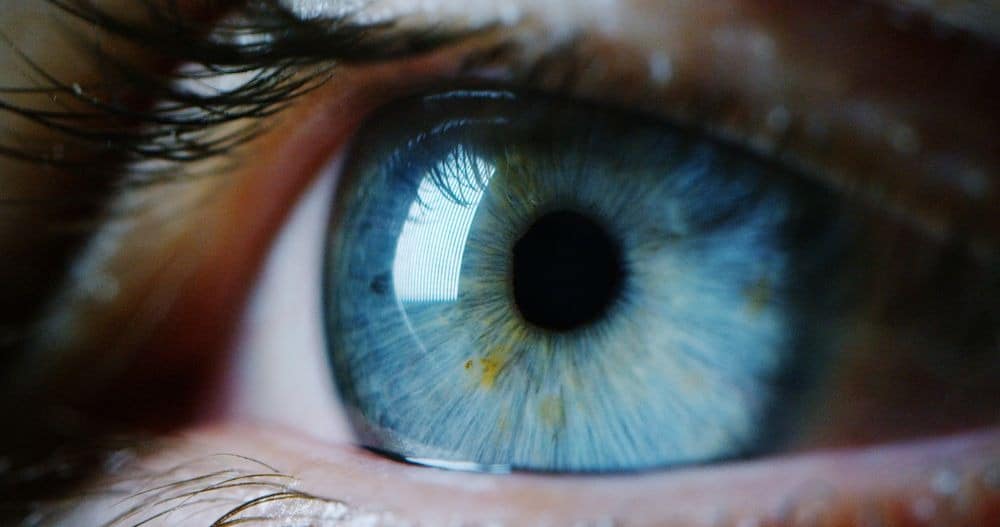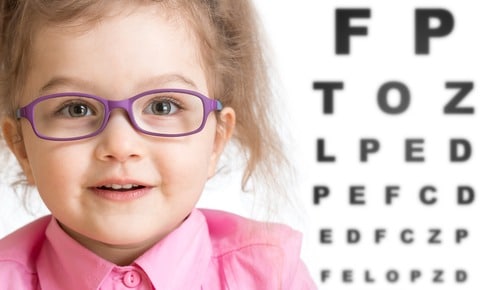How Healthy Would You Say Your Vision Is?
In observance of Healthy Vision Month (May), we’re talking about vision impairments & what you can do to protect your eyes and vision.
How Healthy Would You Say Your Vision Is?
Day in and day out, your vision supports you. From helping you rise in the morning and get ready for the day, to driving, working, reading, navigating your surroundings, cooking, and the list goes on, your eyes and sight propel you from one thing to the next almost seamlessly.

Your vision – whether you need a prescription or not – is there for you; and while your vision may seem healthy from day to day, it’s always worthwhile to regularly check up on it and ensure you’re taking the best care of your eyes.
May is Healthy Vision Month
Healthy Vision Month is an initiative by the National Eye Institute to bring awareness to the gift of sight and encourage people of all ages to take charge of their eye health in order to preserve their sight through every stage of life.
Vision Impairment: What You Need to Know
So, why is there a whole month dedicated to the discussion of healthy vision and what, exactly, does healthy vision mean?
Because while your vision may seem perfectly fine, there could be hidden issues that don’t present any noticeable signs or symptoms, making you largely unaware they’re emerging.
Or, if you are experiencing an eye issue that is an occasional bother but presents no real pain or vision impairment, you may not seek help – allowing a potential vision problem to get worse and eventually begin to hinder your sight.
Here’s what you need to know about vision impairment:
- Vision impairment becomes more common as people age.
- Many serious eye diseases don’t have any warning signs, so individuals could have an eye problem and not know it until it’s too late.
- Women, minority groups, and people with chronic diseases like diabetes may be at a higher risk for having vision impairments.
- Serious eye conditions, like glaucoma, cataracts, diabetic retinopathy, and age-related macular degeneration can cause vision loss and even blindness.
- These are also most of the eye issues that don’t present any noticeable signs or symptoms.
- Less serious issues (but still very prominent vision problems that need medical attention to help your eyes see clearly and best support you) like refractive errors, are common vision conditions that can be easily corrected with glasses or contact lenses.
- For individuals who live with diabetes, it’s imperative to note that the number of Americans 40 years and older who will contend with diabetic retinopathy and vision threatening retinopathy will triple in 2050; from 5.5 million to 16 million and from 1.2 million to 3.4 million.
- Before these diseases can strip anyone of their vision, by regularly seeing an eye doctor there are ways to reduce the risk of vision loss.
While this list may seem daunting and, perhaps, scary to some, there is a lot you can do to ensure your eyes are set up for a lifetime of optimal vision.
What You Can Do to Protect Your Eyes and Vision
Healthy vision starts with a healthy lifestyle and always includes a comprehensive dilated eye exam. Here are some eye health tips to help you protect and take the best care of your eyes and vision:
- Focus on your health
Good overall health is vital when trying to keep your eyes healthy. Try to foster healthy habits, like:- Eating well and consuming plenty of dark, leafy greens, fish that are high in omega-3 fatty acids, and fruits and vegetables.
- Exercising to lower your risk of health conditions that can cause eye health or vision problems, like diabetes, high blood pressure, and high cholesterol.
- Quitting smoking because smoking increases your risk of macular degeneration and cataracts, and it can harm the optic nerve.
- Wear protective eyewear
From sunglasses to protective safety glasses, your eyes deserve protection for things that can harm them.- Be sure your sunglasses block 99 – 100% of both UVA and UVB radiation.
- Always wear safety glasses and goggles to protect your eyes during certain activities – like construction, yard work, and others – when playing sports, or doing home repairs.
- Give your eyes frequent rest
Give your eyes a rest after time spent at the computer or in bright sunlight. Additionally, if you wear contact lenses, always give your eyes a break by removing them every night. This will also prevent eye infections.- Remember, when looking at a computer screen, rest your eyes by taking a break every 20 minutes to look at something about 20 feet away for 20 seconds.
- Know your family history
Have any family members had any eye problems? Some eye diseases and conditions run in families. Additionally, you could be at a higher risk of an eye disease if:- You’re older
- You’re overweight or obese
- Have a family history of eye disease
- You’re African American, Hispanic, or Native American
- Get a comprehensive dilated eye exam
Without question, an annual comprehensive dilated eye exam is the best thing you can do for your eye health.- They’re quick
- They’re painless
- They can save your vision
Why Regular Eye Exams Are So Important for Good Eye and Overall Health
As stated earlier, many eye diseases don’t have any symptoms or warning signs. For this reason, you could feel like your vision is healthy, but you may have an issue lurking and not know it.
During a dilated eye exam, your eye doctor will check for any signs of an eye disease and, if one is present, they can enact the right treatment.
The earlier an eye disease is caught, the easier they are to treat and the potential for vision loss significantly decreases.
Make Vision a Health Priority to Enjoy a Life of Clear, Comfortable Vision
Your eyes deserve the best, and your future vision depends on how you treat and nurture it today.
Let us help you take the best care of your eyes today and every day.

